Sustainable data centers as a service
YIT's bridge-builders are developing infrastructure and creating the future of the capital area
The Crown Bridges project builds much more than bridges and tramways. The project creates a new urban structure and prepares Helsinki for the increase in the population.
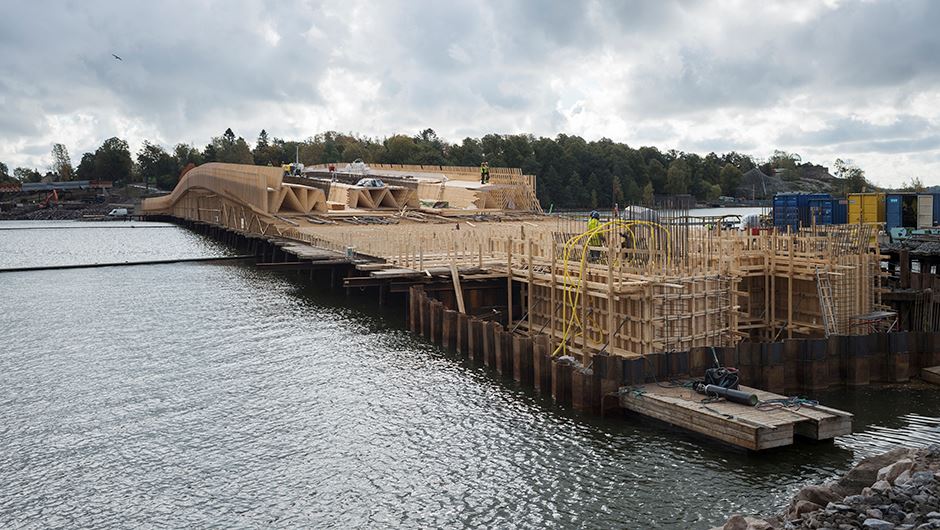
Cycling time will be halved and travel time by public transport will be reduced by 10 minutes from Kruunuvuorenta to the centre of Helsinki. These are just examples of the impacts the Crown Bridges project, which is creating new urban structures in Helsinki.
The most visible part of the project is of course the bridges. The actual Crown Bridges, of which there are three, will be built for the tram: Merihaansilta Bridge from Hakaniemi to Kalasatama, Finkensilta Bridge from Kalasatama to Korkeasaari and Kruunuvuorensilta Bridge from Korkeasaari to Kruunuvuorenranta in Laajasalo.
In addition, the Kruunusillat alliance is building two other bridges in Hakaniemi. The Hakaniemensilta Bridge, built in the 1960s, is in a state of disrepair and will be replaced. The Näkinsilta Bridge for pedestrians and cyclists at Merihaka will also have to be rebuilt due to traffic changes in the area.
It is estimated that the capital will have 870,000 residents by 2060. In June 2022, the number of Helsinki residents was 658,864. The Crown Bridges project responds to this growth challenge by promoting sustainable mobility and building city’s infrastructure for new residential areas and buildings.
The City of Helsinki is implementing the Crown Bridges project as a combination of two contracting models. The two bridges between Kalasatama and Kruunuvuorenranta, the Finkensilta bridge and Kruunuvuori Bridge, as well as the construction in the land areas in Korkeasaari will be realised as an all-in contract. Its contractor is the consortium of YIT and Kreate.
The rest of the construction of the connection will be carried out by an alliance. In addition to YIT, the alliance consists of the City of Helsinki, NRC Group Finland Oy, Ramboll, Sweco and Sitowise.
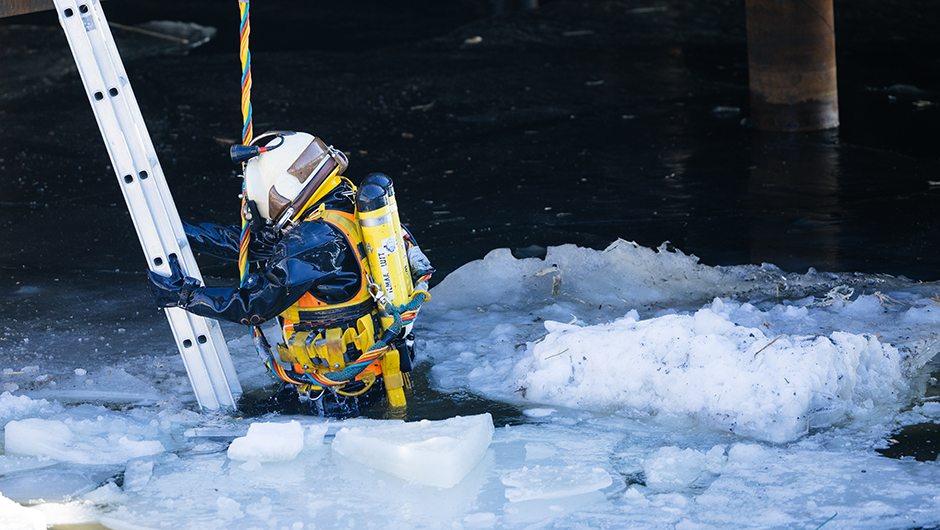
The Crown Bridges project is a demonstration of skills and urban construction
The Crown Bridges project is about much more than bridges and trams. It is a significant example of YIT's work in the field of engineering structures and urban construction. Hakaniemi's new bridge, for example, will change the street routings. The coastline will be moved allowing new plots to be established in the future. Jani Kiili is YIT’s Project Manager for the bridges and water engineering. The scope and complexity of the contract is unique by Finnish standards.
“In Hakaniemi, people work under water. Concrete parts are also 5.4 metres below the surface of the sea,” says Kiili.
Due to the soil, it is necessary to build several so-called pile slabs for street foundations in the area. It is a concrete slab built on piles. In this way, streets can be supported in the bedrock, even if there is a thick layer of, for example, clay in between. There is also a lot of municipal engineering in the area which needs to be removed from under the tramway. The work will therefore result in a number of relocation of sewer systems, water pipes, gas pipes and electricity and telecommunications cables. The construction environment is also challenging.
“There are 40,000 vehicles driving on Sörnäisten rantatie every day, and a great number of cyclists who need to be taken into account.”
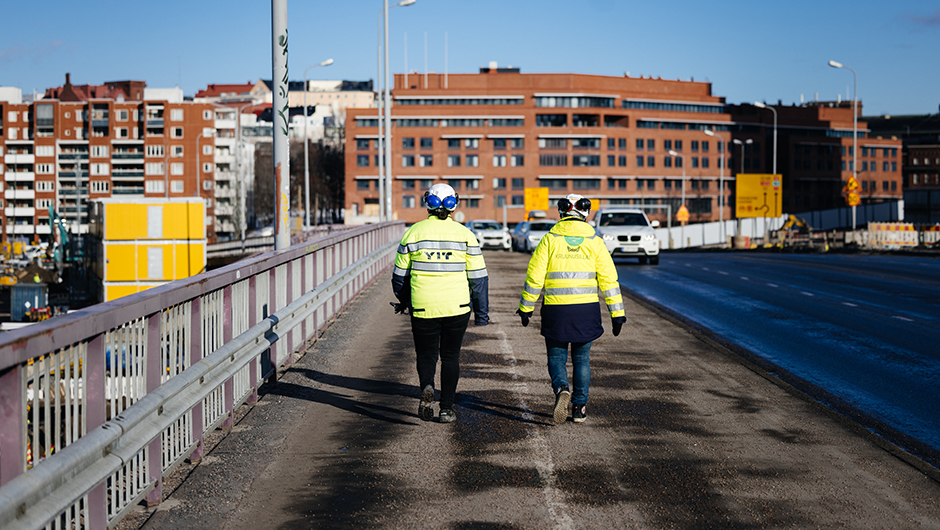
Demanding bridge construction
In addition to the sea, the architecture of the Hakaniemensilta bridge presents challenges for construction. The bridge curves simultaneously in two directions: the convex bridge also curves horizontally. The city plan also contributed to the architectural style of the bridge. The future bridge is clearly lower than its predecessor.
The Näkinsilta bridge, which serves walking and cycling, will be renewed at the same time. It will be built in the same place as its predecessor, but the bridge clearance will change. In connection with the Hämeentie renovation, heavy traffic moved to Sörnäisten rantatie, which determines the new clearance. The rescue route designated in the city plan for the future property in Hakaniemenranta must also be taken into account.
“Before we can start bridge construction, a pumping station will be built on site for waste water and stormwater from the Kruununhaka direction. The pumping station will also act as an abutment for the bridge.”
This technically demanding phase will take approximately as long as the actual bridge construction.
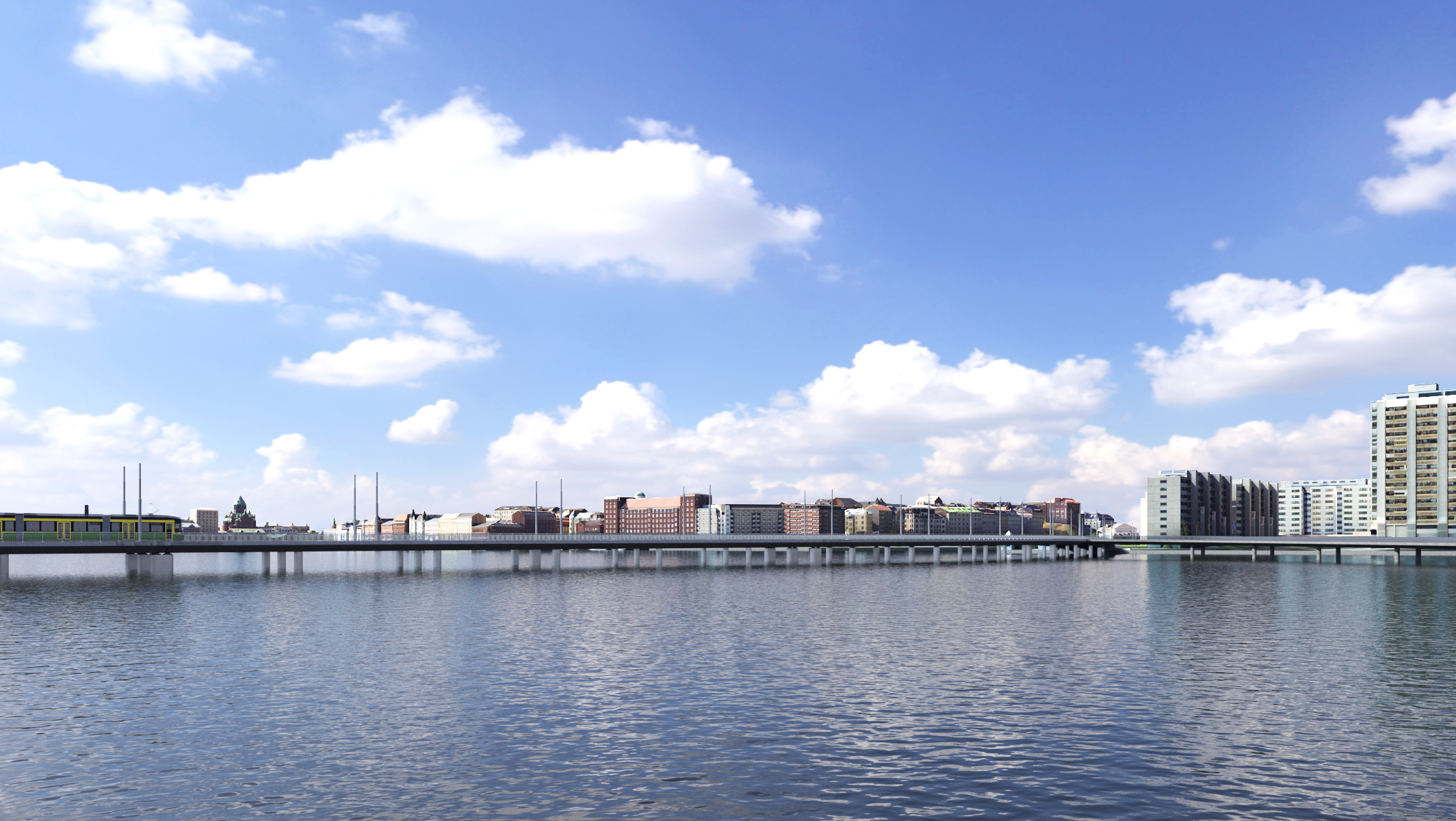
Merihaansilta will be built as a traditional slab bridge.
“It will be a low, surface-supported bridge. Due to the ice, some of the supports are rigid. Pillars similar to the underwater pile foundations will remain visible.”
Another special feature of the bridge is the steel lifting part to be built at the Sompasaari end in Nihti. It must be possible to open the bridge to the Hanasaari direction. The passing point is 3.5 metres deep and 11 metres wide.
The construction of the Hanasaari area has been taken into account. There is a provision for traffic lights and a crosswalk at the future connection point, if the bridge were to branch off to Hanasaari in the future.
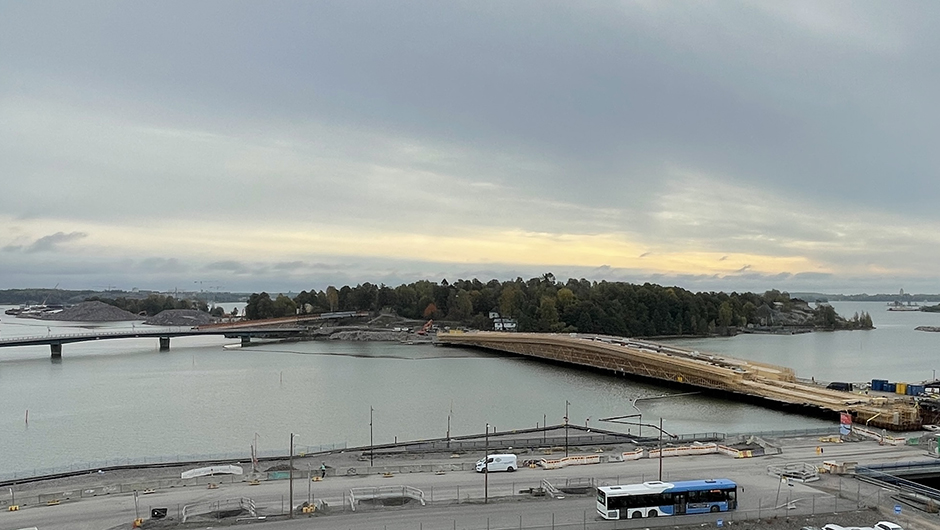
Along Finkensilta via Korkeasaari to Kruunuvuori Bridge
From Sompasaari, the journey continues along Finkensilta to Korkeasaaari. Finkensilta is a so-called continuous prestressed concrete girder bridge. It has six intermediate supports or pillars. The bridge is 300 metres long and carries also trams, walking and cycling.
The most spectacular landmark of the project, Kruunuvuori Bridge, passes over Kruunuvuorenselkä and connects Korkeasaari and Laajasalo in Kruunuvuorenranta. This cable-stayed girder bridge with a composite structure and a concrete deck is approximately 1.2 kilometres long.
“Kruunuvuori Bridge is the longest bridge in Finland. Such a large bridge which is intended only for walking, cycling and trams has never before been constructed anywhere in the world,” says Jarno Ylönen, Project Manager at YIT.
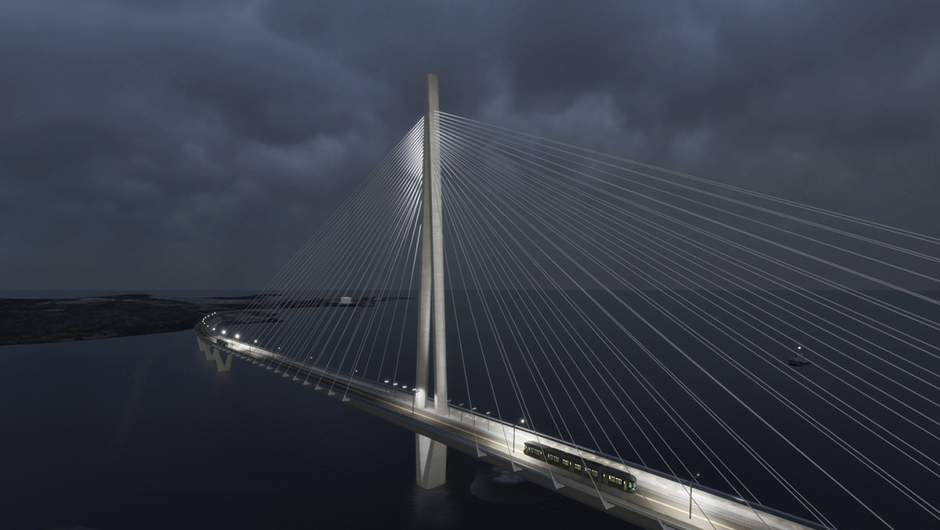
A large and long bridge requires a lot of underwater construction.
“The sensors on the intermediate supports of the Kruunuvuori Bridge are really big. They are dry-built in caissons, which correspond to the size of a single-family house. The longest piles of the intermediate support pillars are more than 30 metres long. In this way, the height of the intermediate support with the sensor and pillar will be up to 48 metres,” Ylönen explains.
The centre of the bridge is built on bedrock, and other intermediate supports are pile-based.
Both Kiili and Ylönen acknowledge that this is a unique project.
“This is one of those once-in-a-lifetime projects. We are building the city's landmarks and significant infrastructure for a long time to come,” Kiili sums up.



